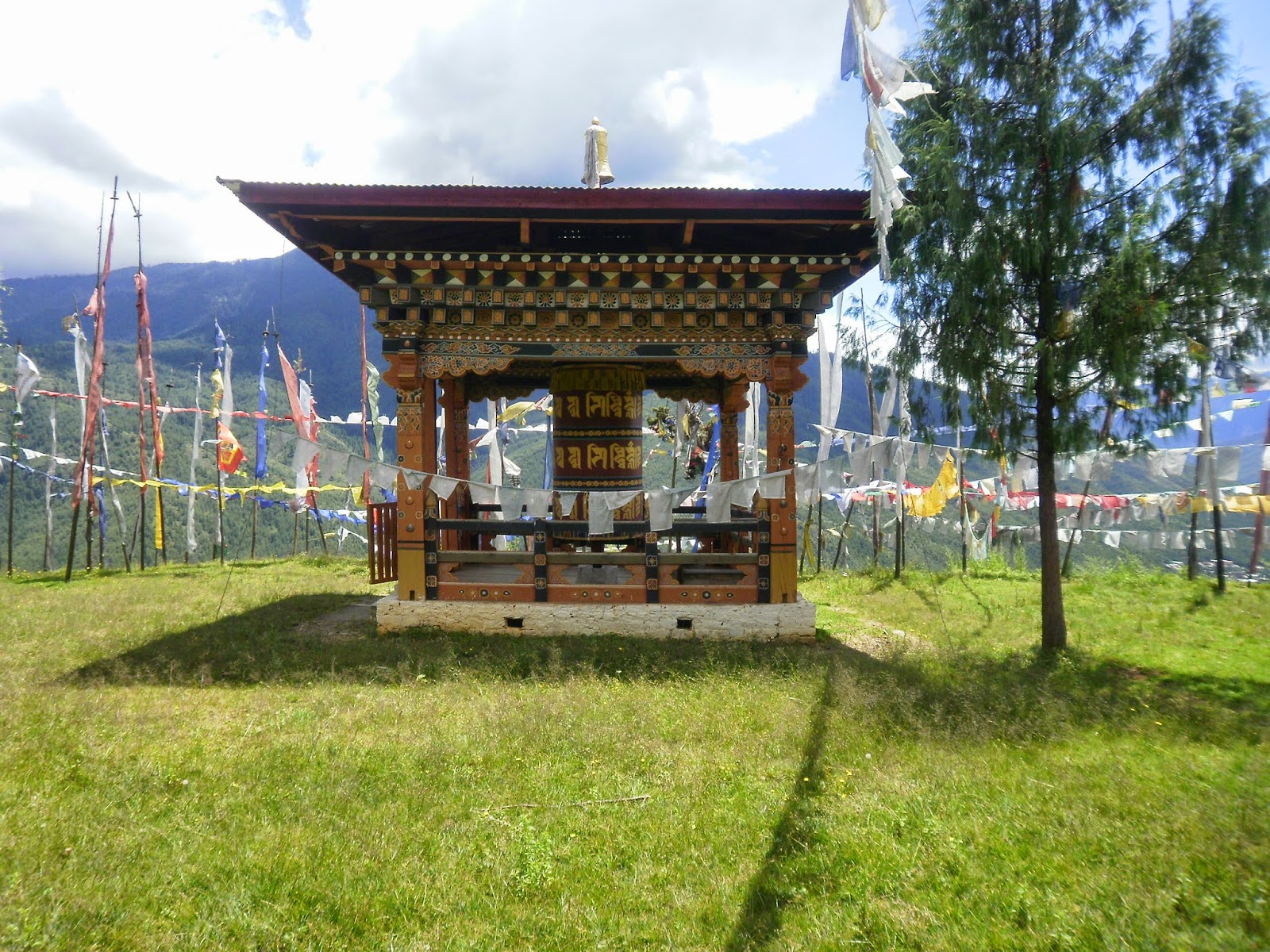Hi friends, thanks for stopping by!
If you’re new to my blog, my name’s Joe Crow and - you guessed it - I’m a crow! I’m originally from Britain but now I’m living in the Kingdom of Bhutan. If you would like to know more about me or Bhutan then please read my previous blog entries.
 |
| Our home in Samey. |
 |
| The view from outside our house! |
I’m not living here on my own though; I’m living with my good friend, Mr. MacInnes. He’s a human being unfortunately, but despite that he’s not too bad to live with. Besides, he can help me type my blogs because he has actually got fingers! He’s the real reason I’m here, because he’s a primary school teacher and he decided he wanted to go and teach in Bhutan. Well, I couldn’t let him go all by himself could I?!
When Mr. MacInnes applied to teach in Bhutan, we had no idea of where in the country we would end up. It was up to the Royal Government of Bhutan, and an organisation called the Bhutan Canada Foundation (BCF), which school would most like to have us. [If grown-ups would like to know more about BCF then please click here]. They decided we would be best in Samey Primary School. Samey is pronounced ‘Sammy’. It’s a very small school, and there are only 103 children in seven classes. Mr MacInnes will be teaching English to children in four of the classes.
Samey Primary School is in a little village, also called Samey, which is in the Dagana district of Bhutan. Can you find Dagana on the map?
 |
| Our home! |
 |
| The road to Samey. |
 |
| We went to a party! |
 |
| Me outside our home. |
 |
| This is the reception classroom (called PP here)! |
 |
| Children playing outside the hall. |
Mr. MacInnes and I live in the school grounds, which makes it nice and easy to get to work in the morning! We live next door to another teacher, and very close to the headteacher too. I bet most of your teachers have to drive their cars to school each morning! Well all of the teachers here live very close indeed!
Samey is at the top of a steep hill, and there are only a few houses. The only way to get here is by a farm road, not the kind of road you will be used to. It takes quite a long time to drive up it because it is very rocky and muddy. I can fly up and down very easily but Mr. MacInnes gets tired legs from walking! There is a small town at the bottom of the hill, where Mr. MacInnes can buy some food. The shops are all very small, and there are no Tescos or Sainsbury’s or any other supermarket here! So many of the things you might buy are not available in Dagana. Mr. MacInnes says he misses pizza and humous the most!
The favourite foods by far here in Dagana are rice, cheese and chillies. Yes, chillies - the spicier the better! Some of the food is so spicy it burns my beak! But I’m slowly getting used to it. The most popular dish is called ema datsi. That’s chillies (usually halved, but sometimes whole) in a cheese sauce. Yowch! I’ll stick to what I can find on the ground thanks! But Mr. MacInnes seems to enjoy it. He’s crazy!
It’s so very quiet and peaceful here, and there’s lots of time to read my favourite books and go for a flap in the beautiful countryside. Mr. MacInnes got all excited because he went walking and saw a type of eagle called a Steppe Eagle. Hmmph! Crows are much more interesting! They’re waaaay cleverer too!!! Sometimes the peace and quiet gets interrupted by the shouts and cries from excited archers or noisy dogs. There are lots of stray dogs in Bhutan but most of them are friendly. However they do keep me up at night with their barking sometimes! If you do go walking in Bhutan it’s very common for people to invite you into their house for a cup of tea as you walk past. People like to show kindness to each other here and often if you say “no thank you” to something offered to you, people will keep insisting until you say yes!
I hope you can get an idea what my home in Bhutan is like from the pictures. Until next time, goodbye and Tashi Delek!
Joe :)





























